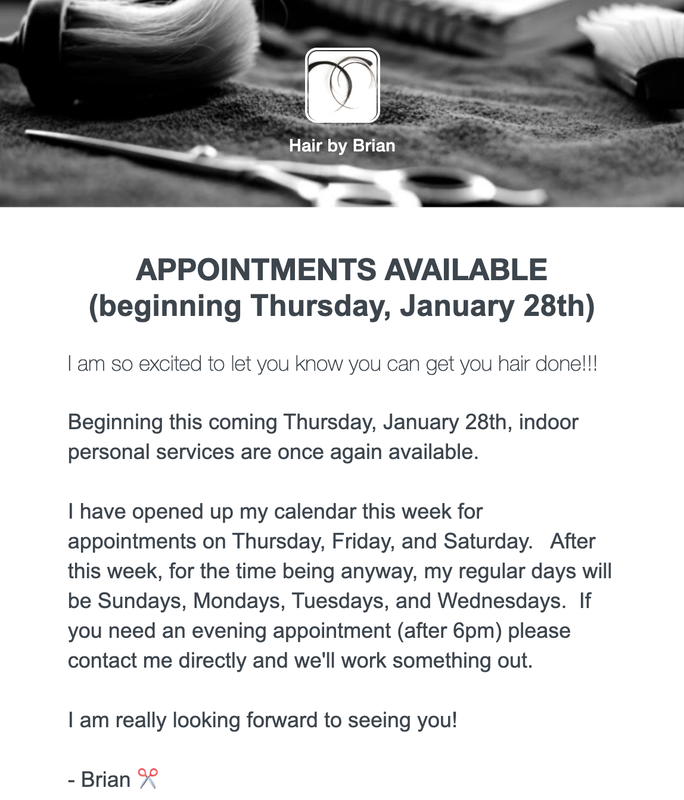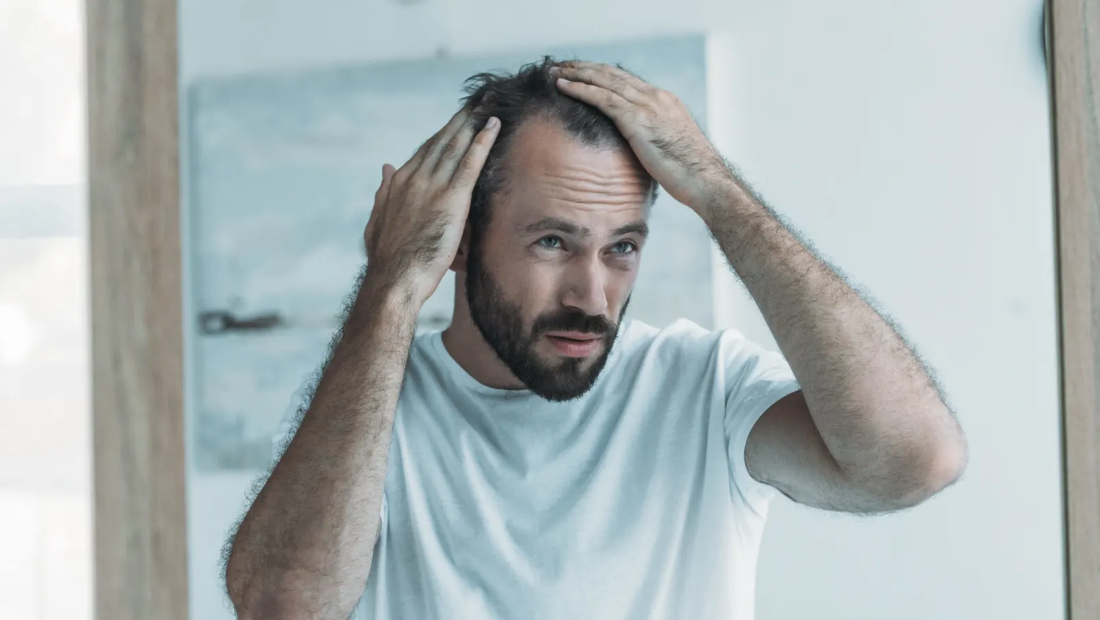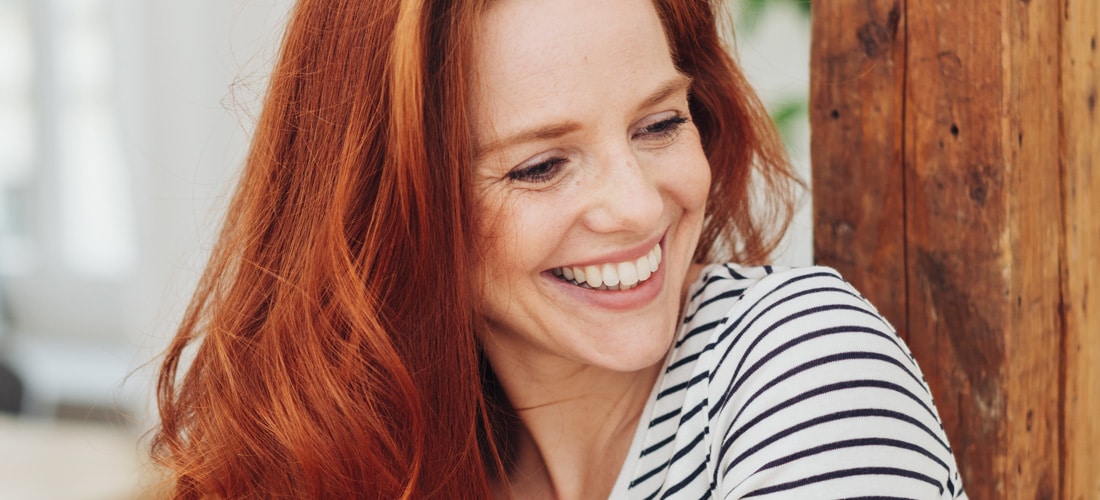|
It can be alarming to look at your comb or the shower drain cover and see a clump of hair. Not only could it clog your pipes, it can cause you to worry that it’s a sign of serious hair loss. But chances are what you’re seeing isn’t anything to be concerned about—and if you want to be sure, there are easy ways to check for abnormal hair loss without visiting a doctor. The average person loses somewhere between 50 and 100 strands of hair per day, according to the American Academy of Dermatology. Yes, that’s a lot, so don’t panic if you see a few strands in your bathroom. Hair shedding versus hair loss While we’re on the topic, there is a difference between hair loss and hair shedding. The AAD notes that hair shedding—or temporarily losing a little more hair than usual—is completely normal, and usually occurs after a major life stressor or body change, like losing 20 pounds or more, giving birth, having a high fever, going off birth control pills, or caregiving for a loved one. Excessive hair shedding usually lasts for six to nine months, and then your hair growth and hair loss returns to normal levels. Hair loss, on the other hand, is when something happens that actually stops your hair from growing, the AAD explains. Examples of this include hereditary hair loss, losing hair because of a medication like chemotherapy, using harsh hair care products, or having a compulsion to pull out your own hair. In these cases, the hair will not regrow until the cause stops—though that’s not possible in every case (i.e., if genetics are to blame). If you still have questions about the difference between hair shedding and hair loss, it may be a good idea to talk to your doctor. That said, if you want to test your own rate of hair loss, here are two ways to go about it: Pull test For a simple at-home test, Dr. James C. Marotta suggests you take about 60 hairs between your fingers and pull a little bit as you run your fingers through your hair. It’s normal to see five to eight hairs in your hand. If you have 15 to 20 hairs, though, you could be losing more hair than normal. Marotta explains: Comb test
Here’s another test to try: Before shampooing, comb from the back of the top of your head forward to the front of the scalp for one minute. Do this while leaning over a lightly colored bed sheet, then count the hairs on the sheet. According to a study published in the Journal of the American Medical Association: Dermatology, you should see about 10 hairs. If you see more, you might be experiencing excessive hair loss. Of course, there are a few caveats to both of these methods, including that these numbers are approximate and may differ between people with different types of hair. Also, we tend to lose more hair as we age, which, again, is normal. But the general idea is to get a baseline for your own head so you can tell when your hair loss has gotten worse. This story was originally published in November 2016 and updated on Dec. 2, 2020 to perform a copyedit and align the content with current Lifehacker style guidelines. 1/15/2021 0 Comments How red hair is different to other hair shades, and not just because of its colourFrom just a passing glance, it’s obvious that red hair differs from other shades. It’s eye-catching, multi-tonal, and has an ability to command attention.
But other than its striking colour, red hair is different to other hair colours in many other ways. Red hair is more fragile, and in shorter supply Natural ginger hair strands are much more fragile than other hair types. And, while many redheads believe they have lots of hair, in general they technically have fewer strands. In fact, it’s estimated that natural blondes have 110,000 strands on average, brunettes have 140,000, while redheads only have 90,000 strands on their heads in total. These fewer strands are usually thicker for redheads though, so the appearance can sometimes be that gingers actually look like they have more hair than other colours. As you can imagine, this combination of fragility and thickness makes for a somewhat tricky customer. Ginger hair is prone to frizz and coarseness Due to the fragility and thickness of red hair strands, this often makes for coarseness and frizz aplenty, which in turn can actually make your ginger shade appear duller than it should. If you think about it, the frizz stands in the way of allowing light to reflect more easily off your hair, so it’s difficult to achieve shiny, bright red hair. By encouraging smoothness of the follicles and strands, more light can then reflect off it, giving brighter, shinier red hair that reveals the multi-tones of your ginger shade. Dryness is the enemy With the above issues of frizz and fragility, many redheads turn to heat styling to try to combat the coarseness and to impose some smoothness on their ginger locks. While heat styling is a temporary solution to reducing frizz, and indeed does smoothen the strands, what happens is it makes your red hair drier and drier each time. Everyone knows that excessive heat styling is bad for their hair, but for redheads, having already fragile and frizz-prone strands means this is a sure-fire way to cause breakage and split ends. Moisture is your friend What red hair craves is heaps of moisture to help encourage strength and smoothness in its follicles and strands. But don’t mistake ‘moisture’ for ‘silicones’. Found in the majority of hair products, silicones are an artificial way of pumping something that appears to give smoothness and moisture to your hair. Granted, for a time your hair may become shinier and feel more conditioned, but over time it will become accustomed to these silicones, which can cause product build-up and eventual dullness, too. The reason why silicones are so prevalent in haircare is because they’re often teamed up with sulfates, the foaming agent commonly used in shampoos and soaps. They’re bad news for the hair and scalp in general, and in particular for redheads, as they’re extremely drying, stripping your natural, glossy oils from your scalp and strands. The answer? What we’re faced with here is red hair that is crying out for something to combat its frizz, fragility, coarseness and dryness. By cutting out both sulfates and silicones, either by going cold turkey or through gradual use, you can train your red hair to rely less on artificial ingredients. Instead, use ingredients that enhance red hair and help alleviate its weaknesses, injecting more shine, moisture and vibrancy into it. Oh, and kick your heat styling habit, too. FYI: You're Probably Not Conditioning Your Hair Enough How often should you be conditioning for your hair type? We all condition our hair to gain good measure with our strands: to be smoother, softer, tangle-free, and frizz-free. We’ll even turn to conditioners for preventative measures against further damage and breakage. Needless to say, the benefits of conditioning can seem endless. But during a time when we’ve been encouraged to shampoo our hair less and less, (in true Carrie Bradshaw fashion) I can’t help but wonder--are we conditioning our hair enough? Between density, porosity, and texture, every one of us has our own unique hair type. Wavy, fine, dry. Straight, thick, silky. Fine hair, but lots of it! And on top of all that, we have to consider our styling habits, our chemical treatments, sun exposure, water filtration, diet, and all sorts of other factors that come into play when considering our hair’s state of health. It’s understandably difficult to pinpoint the right formula for hair care, let alone conditioners, but no matter what you’re working with, conditioner is not to be skimped. While shampoos manage our scalp health, conditioners are the shields for our strands. Its purpose is to help us fight all of those outside barriers. To get things started on the right foot and simplify the decision making process, we’re here to play matchmaker for your strands' conditioning game. Thin Hair If your strands are fine (but you have a ton of hair) you want to be sure you're conditioning every other day. A primary concern with your hair type is avoiding tangles. Conditioning often is so much gentler—and therefore better—for the integrity of your hair as opposed to using a brush to pull tangles out all the time, which can lead to breakage. Instead, comb through in the shower as you apply to your ends. When your hair is fine and there isn't too much of it to work with, the tendency is to skip conditioner altogether—but you, too can use conditioner to your advantage. Try a volumizing conditioner; they're made specifically for your hair type so they won't weigh your hair down like most other conditioners will. Plump up those few strands 2-3 times a week, and just remember to keep conditioner on your ends—it doesn't belong on your scalp. Thick Hair Thicker strands need a ton of hydration, so conditioning plays a very important role in your hair's health and should be used on a daily basis. Even if you're skimping on shampooing your hair, the same rule doesn't apply to conditioner (unless your desired end game is dry, brittle ends). Whether you're a gym rat or just a firm believer in minimal shampoos, your thick mane needs to stay moisturized, so be sure to get it wet and apply conditioner every day. Color Treated Hair With color treated hair, we suggest using a deep conditioning treatment 1-2 times a week on top of regular conditioning to help rebuild cuticles from the inside out. Hair that's been colored or bleached has been stripped and its porosity has been heightened by bleach and/or peroxide (meaning, your hair absorb moisture but can't actually retain it). A deep conditioner will keep your strands soft and smooth and will fight against treatment-induced frays and breakage. As for your daily conditioner, there's a slew of them out there that can actually support your color from getting stripped or altered by minerals (or other buildup), and we've rounded them up for you here. Dry Hair Dry hair could be a result of heat styling too often, or a reaction to a change in your climate. The key word needed in your conditioner is moisturizing, and it's a word you'll want to frequent in your hair care regime. Moisturizing conditioners are going to smooth out any frailties. You can get away with conditioning every other day, but there are also other protective measures we recommend: Use a conditioning oil, cream, or leave-in spray to add extra moisture to your hair after the shower. You'll also want to do a deep treatment conditioning masque once or twice a month. Sticking with this frequency will keep your hair on the shinier side and provide a barrier against drying out. Conditioning is a crucial part of our hair's overall health. When it comes to how often we condition—whether it be a leave-in spray, deep treatment, or attempt at breakage prevention—the moral of the story is more is more. Recommendations from Byrdie
|
Hair by BrianMy name is Brian and I help people confidently take on the world. CategoriesAll Advice Announcement Awards Balayage Barbering Beach Waves Beauty News Book Now Brazilian Treatment Clients Cool Facts COVID 19 Health COVID 19 Update Curlies EGift Card Films Follically Challenged Gossip Grooming Hair Care Haircolor Haircut Hair Facts Hair History Hair Loss Hair Styling Hair Tips Hair Tools Health Health And Safety Healthy Hair Highlights Holidays Humor Mens Hair Men's Long Hair Newsletter Ombre Policies Procedures Press Release Previous Blog Privacy Policy Product Knowledge Product Reviews Promotions Read Your Labels Recommendations Reviews Scalp Health Science Services Smoothing Treatments Social Media Summer Hair Tips Textured Hair Thinning Hair Travel Tips Trending Wellness Womens Hair Archives
April 2025
|
|
Hey...
Your Mom Called! Book today! |
Sunday: 11am-5pm
Monday: 11am-6pm Tuesday: 10am - 6pm Wednesday: 10am - 6pm Thursday: By Appointment Friday: By Appointment Saturday: By Appointment |









 RSS Feed
RSS Feed